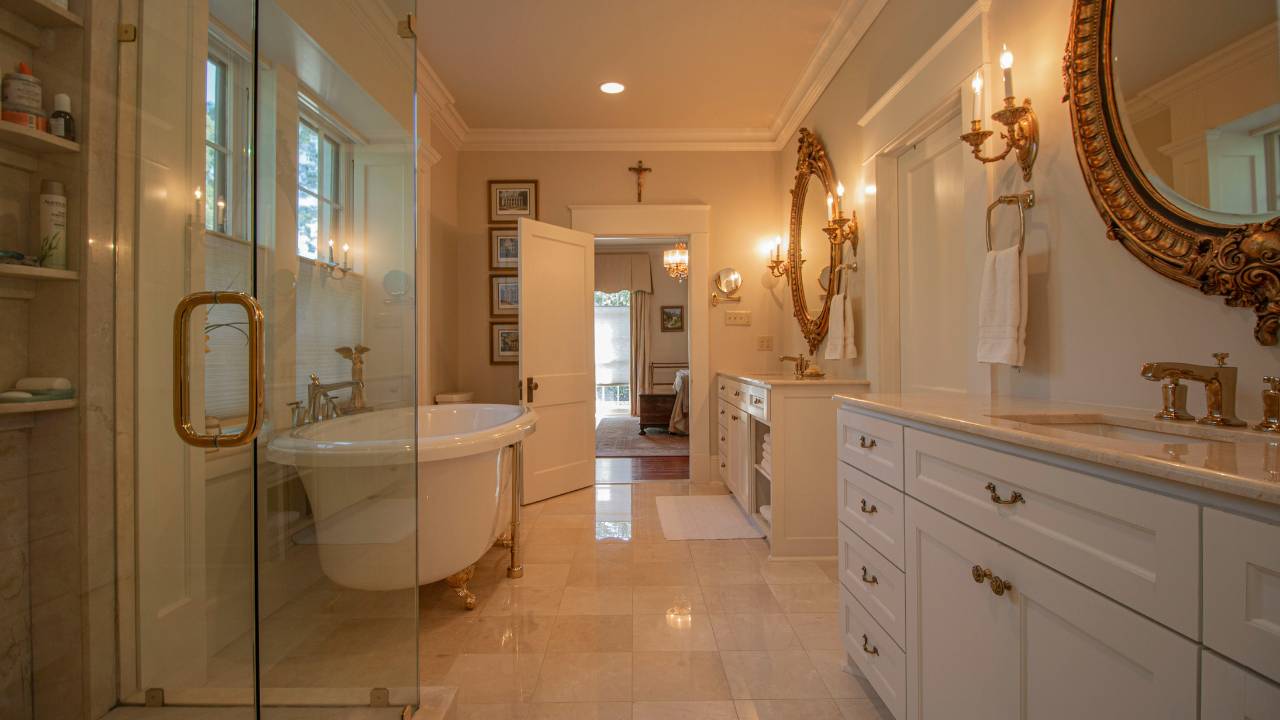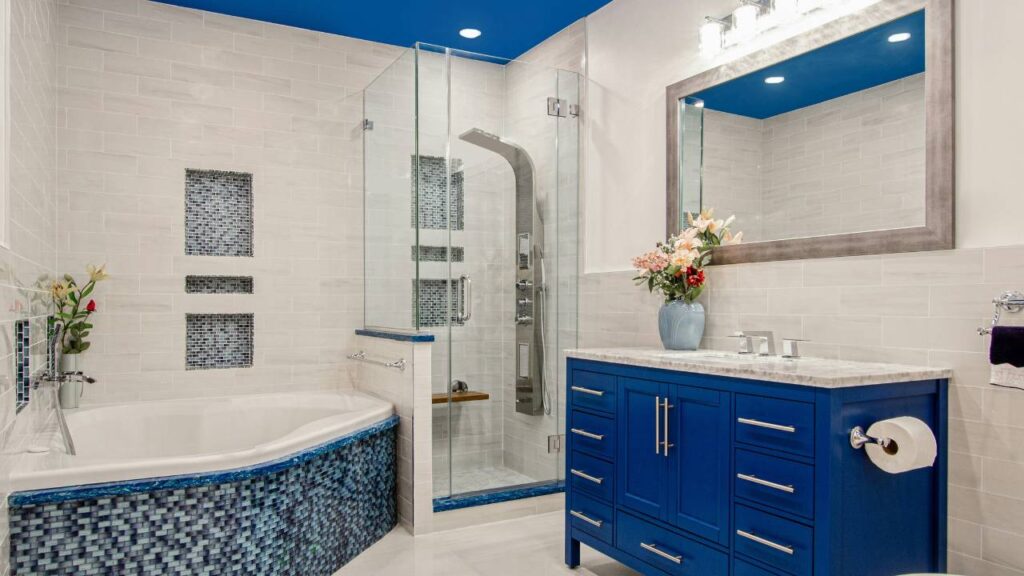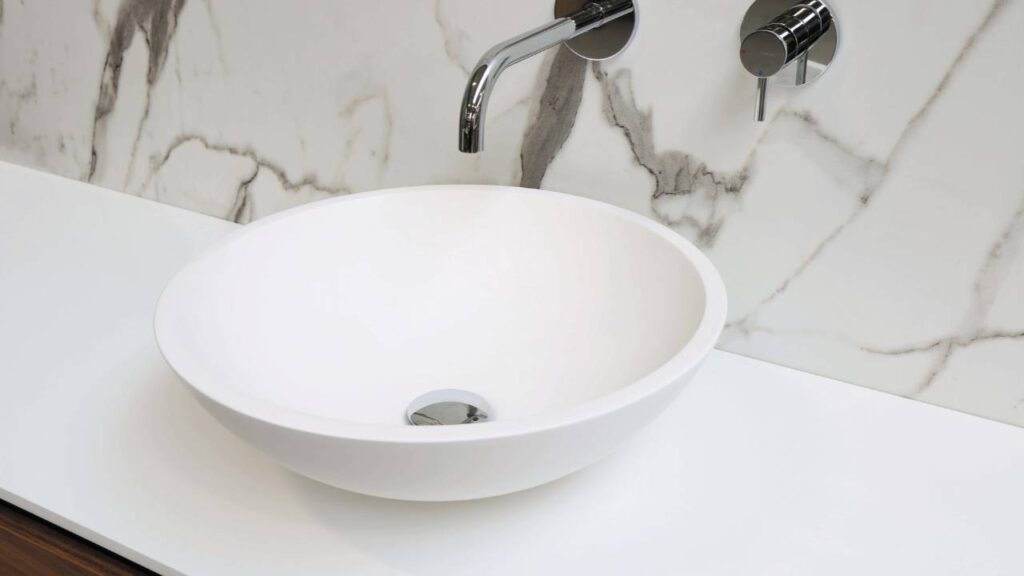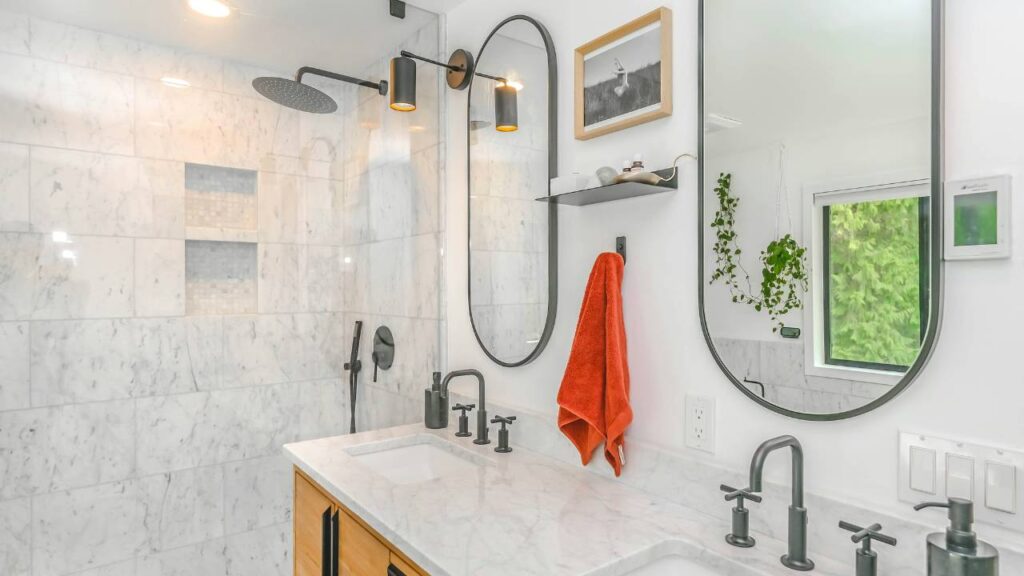
On average, the cost of a bathroom renovation in Ireland can range substantially. Minor updates could set you back a few thousand Euros, while a comprehensive bathroom overhaul could require a substantially larger investment. These costs typically cover plumbing, electrical work, fixtures, tiling, and labour. Keep in mind that choosing high-end finishes and fixtures will push the budget further, so it’s vital to consider how each choice affects the overall cost.
When planning your bathroom remodel, it’s important to set a realistic budget that aligns with your vision for the space. Remember to factor in unexpected expenses, which can arise during renovations. Seeking quotes from multiple contractors could provide you with a clearer picture of the potential costs and help you find the right professional to bring your dream bathroom to life within your budget.
Understanding Bathroom Remodel Costs in Ireland
When considering remodelling your bathroom in Ireland, it’s crucial to understand the various costs involved. This section will guide you through the primary factors affecting your total expenses and provide a clear breakdown of costs for materials, labour, and installation.
Factors Influencing Overall Expenses
Your bathroom remodel cost can vary significantly based on several factors. Size of the bathroom: Larger bathrooms require more materials and work, which increases costs. Choice of fixtures and fittings: High-end fixtures and bespoke fittings can raise the price, while more standard options help keep costs down. Complexity of the design: A simplistic design will typically be less expensive than a complicated layout with numerous features.
- Condition of existing bathroom: Pre-existing issues may require additional plumbing or electrical work, influencing your budget.
- Location: Labour and material costs can differ based on where you live in Ireland.
Cost Breakdown: Materials, Labour, and Installation
Materials
Your choice of tiles, fittings, and other materials will directly impact the total cost. On average, materials can account for:
- Tiles: €20 – €60 per square metre
- Fixtures (like sinks and toilets): €100 – €500
- Fittings (taps, showerheads): €50 – €300
Materials typically consume approximately 40-60% of your budget depending on the quality and brand chosen.
Labour and Installation
The remaining part of your budget usually goes towards labour and installation costs. Labour cost often depends on the time it takes to complete the work, which includes plumbing, electrical work, and the installation of fixtures and fittings. Average labour costs in Ireland range from:
- Plumbing: €40 – €70 per hour
- Electrical work: €50 – €80 per hour
- Installation of fixtures and fittings: These can vary, with a full bathroom remodel labour cost ranging between €1,000 to €3,500 or more.
While these figures can give you a baseline, obtaining multiple quotes from professionals will offer the most accurate estimate for your specific bathroom remodel in Ireland. Don’t forget about possible government grants, too.
Designing Your Bathroom

Crafting a bathroom that balances aesthetic appeal with functionality requires thoughtful planning. Your choices in layout, fixtures, and sustainable solutions will shape your bathroom experience.
Choosing the Right Layout
The bathroom layout is fundamental in maximising both the functionality and design of your space. When you plan, envision your daily routine and ensure you have ample room for each activity. A user-friendly design might involve a separate shower and bathtub, or combining both if space is limited. Your toilet should be placed discreetly, while the sink and mirror may be focal points. Consider access and movement flow to avoid cramped spaces.
- Example Layout 1: Toilet on one wall, facing a shower-bath combination on the opposite with a vanity basin and mirror adjacent.
- Example Layout 2: A walk-in shower at one end, a freestanding bath along the longest wall, and the toilet and basin opposite each other for ease of plumbing.
Selecting Fixtures and Accessories
Your fixtures and accessories are key to your bathroom’s functionality. Choose a shower head and taps that complement each other in both design and water efficiency. The toilet must balance modern aesthetics with water-saving features. Options for basins range from pedestal designs to counter-mounted vanity basins. Mirrors can include built-in lighting or storage, adding to their utility. Remember, each accessory should complement the bathroom layout and overall design theme.
- Showerheads: Rainfall, handheld, or dual-function models.
- Taps: Mixer taps or individual hot and cold options.
- Toilet: Standard, wall-mounted, or close-coupled styles.
- Basin: Selection includes full pedestal, semi-pedestal, or wall-hung designs.
Incorporating Energy-Efficient Solutions
Installing energy-efficient fixtures is beneficial for both the environment and your utility bills. Seek shower heads and taps designed to reduce water consumption without compromising pressure. An efficient toilet design with a dual flush mechanism can conserve water. Consider LED lighting options which offer longevity and lower energy usage while illuminating your vanity and mirror areas effectively.
Energy-Efficient Fixtures:
- Low-flow showerheads and tap aerators.
- Dual-flush toilets.
- LED lights and motion-sensing switches.
Practical Tips for Bathroom Renovation
Embarking on a bathroom renovation can be exciting but also costly. The key to a successful upgrade lies in balancing cost-saving measures with quality results.
How to Save on Costs Without Sacrificing Quality
When renovating your bathroom, high-quality materials often come with a high price tag, but there are ways to keep expenses down without compromising on quality. One effective tip to save money is to reuse existing fixtures whenever possible. If your bathtub or sink is in good condition, giving it a new lease of life with professional resurfacing can make it look brand new for a fraction of the cost.
Another tip is to choose alternative materials that give you a similar look and feel as premium options but at a lower price point. For example, luxury vinyl tile can mimic the look of natural stone but is significantly less expensive. Don’t be afraid to shop around; comparing prices from different suppliers can lead to substantial savings. Remember, the price doesn’t always reflect the quality, so read reviews and ask for professional opinions before making your purchases.
DIY Versus Professional Renovation
When it comes to bathroom renovations, you need to consider your skill level before taking on a DIY project. Simple tasks like painting or updating hardware can be handled on your own and can save you money. However, for more complex jobs such as plumbing or electrical work, hiring a professional is advisable. This ensures the work is up to code and can save you from costly mistakes in the long run.
If you decide to tackle some DIY options, educate yourself thoroughly and maybe even attend a workshop. This investment in your skills will pay off. However, when quality cannot be sacrificed, don’t hesitate to solicit professional opinions. Professionals can guide you on where to invest in the renovation process to ensure longevity and add the most value to your home.
The Impact of Bathroom Size and Choice of Materials

When you’re planning your bathroom remodel in Ireland, the size of your bathroom and the materials you select for surfaces like walls and floors will greatly influence your costs.
Small vs. Full Bathroom Remodels
Remodelling a small bathroom typically costs less than a full bathroom due to the reduced square footage, meaning less material and labour. However, because small bathrooms often have standard sizes and limited space, optimising the layout around existing plumbing to avoid moving fixtures can be a clever cost-saving strategy.
In contrast, full bathroom remodels involve a larger area and potentially more complex renovations, including replacing tubs, showers, sinks, and toilets. This can lead to a significant increase in cost, depending on both the size of your bathroom and the choice of fixtures and features.
- Standard sizes for a small bathroom might include around 2 by 3 metres, while full bathrooms can be 3 by 5 metres or larger.
Tile Selection: Ceramic and Alternative Options
Choosing the right tiles can also affect your remodel’s cost. Ceramic tiles are popular for both wall tiles and floor tiles because they offer a balance of durability and cost-effectiveness.
- Floor tiles need to be more robust than wall tiles, hence materials like porcelain can be a better but more costly choice.
Alternate materials such as luxury vinyl or stone can increase your cost, but also add to the aesthetics and longevity of your bathroom. When making your selection, it’s important to consider both the purchase price and the installation cost, as more complex or larger tiles can be pricier to install.
Final Considerations Before Starting Your Remodel

Before you take the plunge into remodelling your bathroom, two critical steps should be at the top of your checklist: ensuring thorough surveys and measurements are taken, and securing necessary permits while fully understanding local regulations.
Surveys and Accurate Measurements
Start your bathroom remodel on a strong foundation by conducting a detailed survey. It’s essential to measure the space accurately, as even slight miscalculations can lead to significant issues down the line. Whether you’re eyeing a mid-range refresh or a luxury overhaul, precise measurements are the key to avoiding hidden costs that can emerge from incorrect orders or unsuitable fixtures. Always double-check:
- Room dimensions
- Plumbing layout
- Electrical fittings
Securing Permits and Understanding Regulations
Renovating a bathroom isn’t just about picking the right tiles or the perfect shower head. Unlike some permission-free home extension projects, an undertaking of this type will probably require specific permits, especially if it involves structural changes or significant plumbing alterations. Check with your local council to avoid penalties or project delays. Here’s what you need to keep in mind:
- Permit requirements: They can vary, so visit your local council’s website or office to get the exact details.
- Building regulations: Make sure your renovation complies with the latest building codes to ensure safety and compliance.
Understanding the necessary permits and regulations, whether for remodelling projects or house extensions, can help you gauge the cost of your renovation more accurately, preventing unexpected expenses. Whether you’re budgeting for a mid-range new bathroom or splurging on a luxury new bathroom, being proactive with permits and codes is wise. Additionally, by consulting professionals, you can navigate these details more smoothly, ensuring your new bathroom meets all the required standards.